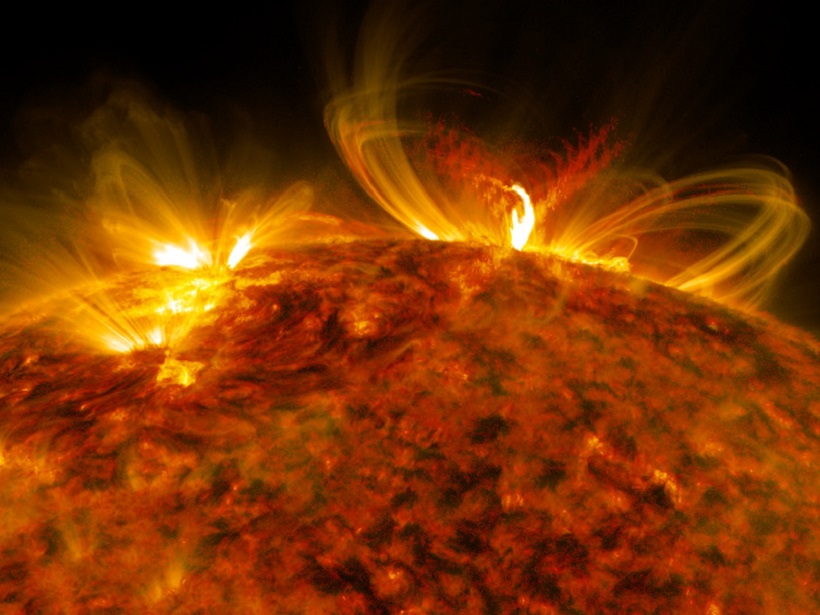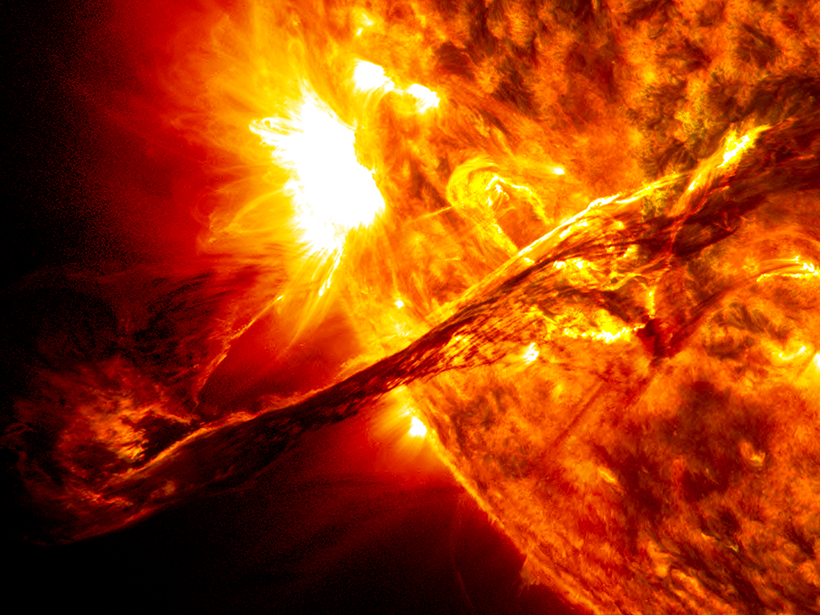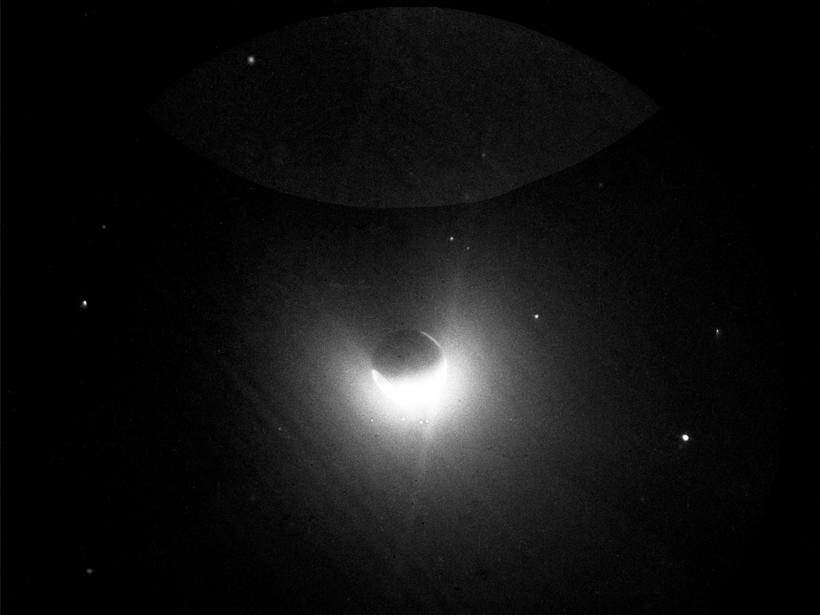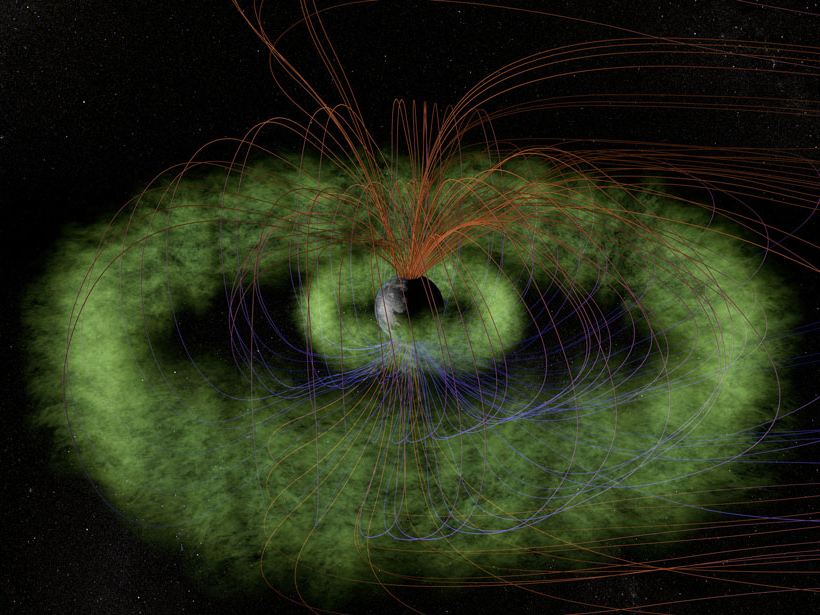The lower-energy particles may play a larger role in magnetic reconnection than previously believed, influencing space weather near Earth.
space weather (hazard)
How Earth’s Outer Radiation Belts Lose Their Electrons
A new analysis of three space storms reveals the mechanisms of particle loss from the Van Allen belts.
A Wake-up Call from the Sun
A sudden burst of activity from the Sun in early September 2017 caused a wide range of space weather effects at Earth.
Solar Probe Will Approach Sun Closer Than Any Prior Spacecraft
Technological improvements, including an advanced thermal protection system and innovative solar arrays, have helped to get this mission off the drawing board.
NASA Fleet Helps Predict Space Weather
Using 8 years of data collected via spacecraft, scientists produce hindcasts of plasma eruptions from the Sun. These will help improve forecasts.
Largest Flare of Past 9 Years Erupts from Sun
A massive flare and blast of charged particles toward Earth may disrupt satellites and communications and push auroras toward lower latitudes through tomorrow, according to space weather experts.
Auroras May Explain an Anomaly in Earth’s Ionosphere
A new study finds that the ionospheric anomaly over the Weddell Sea is likely influenced by proximity to auroral energy input, rather than by tilting magnetic fields.
How Geomagnetic Storms Light Up the Geocorona
After geomagnetic storms, Earth’s corona abruptly increases in hydrogen density. For the first time, serendipitous observations have allowed researchers to investigate why.
How “Whistling” Plasma Waves Shape Earth’s Radiation Belts
The Van Allen radiation belts surrounding Earth shrink and swell due to plasma waves moving through them, an analysis of satellite data suggests.
Mining Ancient Texts Reveals Clues to Space Weather of Yore
Low-latitude sightings of colorful hues in the sky likely to have been auroras indicate powerful geomagnetic storms buffeted Earth when some old chronicles were written, researchers report.










